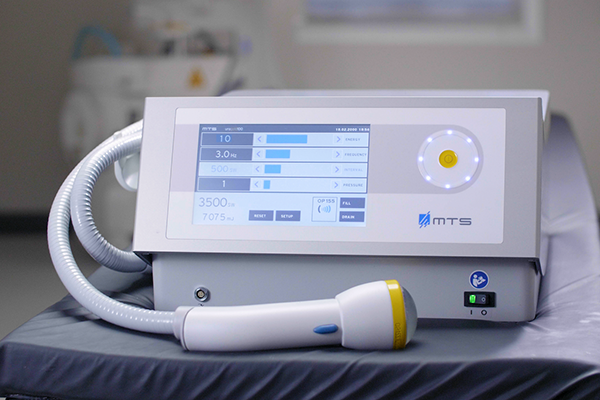Shoulder joint pain can make even simple movements feel stiff and uncomfortable, whether it’s reaching for a glass in the kitchen or getting through a workout. If you’ve been dealing with lingering soreness or a sudden flare-up, you’ve probably wondered: Should I use ice or heat for shoulder joint pain? Both can help, but using the wrong one at the wrong time could make things worse. Before you reach for an ice pack or heating pad, let’s break down when each is most effective and how to get the best results.
What Can Cause Shoulder Joint Pain?

The shoulder is one of the most mobile joints in the body, but that flexibility also makes it vulnerable to pain and discomfort. Whether it develops gradually or comes on suddenly, shoulder pain often stems from one of these common causes:
- Overuse: Repetitive motions or excessive strain can lead to discomfort in the shoulder area.
- Injury: Accidents or sudden impacts may result in pain due to trauma to the shoulder.
- Poor Posture: Maintaining improper posture over time can contribute to shoulder discomfort.
- Age-Related Wear and Tear: Natural degeneration of tissues can cause pain as we age.
- Inflammation: Swelling within the shoulder joint can lead to persistent pain.
Symptoms of Shoulder Joint Pain
Shoulder pain isn’t always sharp or sudden—it can develop gradually and worsen over time. Recognizing the signs early can help you address the issue before it limits movement or leads to further complications.
Common symptoms include:
- Aching Sensation: A constant, dull pain in the shoulder area.
- Stiffness: Difficulty moving the shoulder freely.
- Swelling: Visible inflammation or puffiness around the joint.
- Tenderness: Sensitivity to touch or pressure on the shoulder.
- Reduced Range of Motion: Inability to move the shoulder through its full range.
Ice vs. Heat for Shoulder Joint Pain: Which One Should You Use?
Both ice and heat therapies play significant roles in alleviating shoulder joint pain. Ice is typically used to reduce inflammation and numb acute pain, while heat helps relax and loosen tissues, stimulating blood flow to the area. Knowing when and how to use each therapy can enhance recovery and comfort.
When Should You Use Ice for Shoulder Joint Pain?
Ice therapy is most effective immediately after a sudden shoulder injury. Applying ice can help constrict blood vessels, reduce swelling, and numb the area to alleviate pain. Situations where ice therapy is beneficial include:
- After a Recent Injury: Applying ice promptly can minimize swelling and tissue damage.
- Visible Swelling: Ice helps reduce inflammation and eases discomfort.
- Sharp Pain Onset: Numbing the area with ice can relieve immediate pain.
How To Apply Ice for Shoulder Joint Pain Correctly
Using ice correctly ensures maximum benefits while preventing skin damage. Follow these steps:
- Prepare the Ice Pack: Use a cold pack or wrap ice cubes in a towel to avoid direct contact with the skin, preventing potential ice burns.
- Application Duration: Place the ice pack on the affected shoulder for 15-20 minutes.
- Frequency: Repeat this process every 2-3 hours during the initial 48-72 hours after the injury or during periods of heightened pain and inflammation.
- Skin Protection: Always place a cloth between the ice pack and your skin to prevent frostbite.
When Should You Use Heat for Shoulder Joint Pain?
Heat therapy is beneficial for alleviating shoulder discomfort, especially when dealing with stiffness or chronic aches. Applying heat helps to relax and loosen tissues and stimulates blood flow to the area. Some of the main benefits of heat therapy include:
- Enhanced Blood Circulation: Applying heat to the shoulder dilates blood vessels, increasing blood flow to the affected area. This surge in circulation delivers essential oxygen and nutrients, promoting tissue healing and reducing recovery time.
- Muscle Relaxation: Heat therapy helps relax tense muscles by reducing muscle spasms and decreasing stiffness. The warmth makes muscles more pliable, easing discomfort and enhancing mobility.
- Improved Flexibility: Regular heat application can increase the elasticity of muscles and connective tissues around the shoulder joint. This improvement in flexibility facilitates a greater range of motion, making daily activities less painful and more manageable.
How To Apply Heat for Shoulder Joint Pain Correctly
Following proper guidelines for applying heat therapy will ensure your safety and maximize its benefits. To effectively and safely apply heat therapy:
- Choose the Right Heat Source: Options include warm towels, heating pads, or warm baths.
- Application Duration: Apply heat to the affected area for 15-20 minutes.
- Frequency: Use heat therapy as needed, ensuring the skin returns to normal temperature between sessions.
- Temperature Check: Ensure the heat is warm, not hot, to prevent burns.
- Skin Protection: Place a cloth between the heat source and your skin to avoid direct contact.
Should You Combine Ice and Heat for Shoulder Pain?
Alternating between ice and heat therapies can be advantageous in specific scenarios, such as managing shoulder joint pain. This approach can help reduce inflammation with ice application and promote healing and flexibility with heat therapy. However, monitoring your body’s response and adjusting accordingly is essential. This approach leverages the distinct advantages of cold and heat applications to aid recovery and pain relief.
For optimal results, you can begin with cold therapy to address acute pain and inflammation, especially within the first 48 to 72 hours following an injury. Once the initial swelling has subsided, transition to heat therapy to relax muscles and improve blood flow. In some cases, alternating between cold and heat can be effective; for example, applying heat for 10 minutes followed by cold for another 10 minutes. This combination can help reduce muscle stiffness and promote tissue healing.
Precautions when applying ice and heat to alleviate your shoulder joint pain:
- Monitor Skin Response: To prevent burns or frostbite, always place a barrier, such as a cloth, between the therapy source and your skin.
- Limit Application Time: To avoid damaging your skin or tissue, apply cold or heat therapy for no more than 20 minutes at a time.
- Avoid Overuse: Excessive use of either therapy can lead to adverse effects; ensure adequate intervals between sessions.
Before initiating contrast therapy, consult with a healthcare professional to ensure it’s appropriate for your specific condition.
When Not To Use Cold Or Heat for Shoulder Joint Pain
There are specific situations in which ice and heat therapy use may be inappropriate or even harmful.
When to Avoid Ice Therapy:
- Circulatory Issues: Individuals with conditions such as peripheral vascular disease or Raynaud’s phenomenon should avoid ice therapy. The vasoconstrictive effect of cold can further reduce blood flow, exacerbating these conditions.
- Sensory Disorders: If you have impaired sensation due to neuropathy or other nerve-related issues, applying ice may lead to unrecognized tissue damage, as the reduced sensation can prevent you from feeling excessive cold or pain.
- Cold Hypersensitivity: Conditions like cold intolerance, cryoglobulinemia, or paroxysmal cold hemoglobinuria make individuals unusually sensitive to cold, leading to adverse reactions such as skin welts, pain, or more severe systemic responses upon exposure to ice therapy.
When to Avoid Heat Therapy:
- Acute Inflammation or Recent Injury: Applying heat to a freshly injured or inflamed area can increase blood flow, potentially worsening swelling and prolonging recovery.
- Impaired Circulation: Individuals with conditions like diabetes or peripheral vascular disease may have a reduced ability to dissipate heat, increasing the risk of burns or tissue damage when using heat therapy.
- Skin Conditions or Open Wounds: Applying heat over areas with dermatitis, open wounds, or infections can exacerbate these conditions, potentially leading to increased irritation or spread of infection.
When to See a Doctor for Shoulder Pain

When shoulder joint discomfort starts interfering with your daily life, it may be time to seek professional help. While mild discomfort can often be managed with at-home treatments like ice and heat therapy, persistent or worsening pain might require a more comprehensive approach.
Consider reaching out to a healthcare provider if:
- Pain Persists Beyond a Few Weeks: A professional evaluation can help determine the best course of action if discomfort does not improve despite rest and self-care.
- Limited Mobility: Struggling to raise your arm, rotate your shoulder, or perform simple movements may indicate an underlying issue that requires medical attention.
- Pain Interrupts Sleep or Daily Activities: When discomfort prevents restful sleep or makes tasks like getting dressed or carrying groceries difficult, a more targeted treatment approach may be necessary.
- Recurring or Worsening Pain: If the pain comes and goes but continues to return, it could be a sign that a deeper issue needs to be addressed.
- Pain Accompanied by Weakness or Numbness: A sensation of weakness or tingling in the arm or hand could signal nerve involvement, which requires professional care.
Ignoring persistent discomfort can prolong recovery and make treating the situation more challenging. Seeking help at the right time can lead to faster relief and better long-term outcomes.
What Are The Treatment Options For Shoulder Joint Pain?
There are various approaches to managing shoulder joint discomfort, ranging from self-care techniques to advanced medical treatments. The right solution depends on the severity of the pain and how long it has been present.
- Physical Therapy: Guided exercises can help strengthen the muscles around the shoulder, improve flexibility, and support joint function. A therapist can tailor movements to fit individual needs.
- Medications: Over-the-counter pain relievers or anti-inflammatory medications can temporarily relieve pain, but they do not address the root cause of the pain.
- Lifestyle Adjustments: Modifying certain activities, improving posture, and incorporating gentle stretching into a daily routine can ease strain on the shoulder joint.
- Injections: Sometimes, healthcare providers may suggest injections to reduce inflammation and provide temporary relief.
- Shockwave Therapy for Shoulder Joint Pain: An innovative and noninvasive treatment, shockwave therapy uses sound waves to stimulate natural healing, reduce discomfort, and improve mobility. One of the most advanced forms of shockwave therapy available today is SoftWave Therapy.
SoftWave Therapy: An Advanced Solution for Shoulder Joint Pain
Unlike ice or heat, which provide temporary relief, SoftWave Therapy helps the body address discomfort at its source. SoftWave uses true broad-focused shock waves, meaning it treats a larger and deeper tissue area without needing surgery, medication, or invasive procedures. This technology increases blood flow, modulates inflammation, and encourages tissue regeneration.
Many people who have struggled with ongoing shoulder joint discomfort have found lasting relief through SoftWave Therapy. If at-home treatments haven’t provided the relief you need, this innovative therapy could be the next step toward feeling better and moving freely again.
The Best Shockwave Therapy for Shoulder Pain
Are you looking for safe, reliable, and effective relief from shoulder pain?
SoftWave therapy is FDA-cleared, patented, and nationally recognized for its leading tissue regeneration technology. Unlike other types of high-energy shockwave treatments, SoftWave is the only shockwave therapy on the market that uses true broad-focused shock waves that treat larger and deeper areas of tissue.
Thousands of patients have experienced the benefits of SoftWave for shoulder pain, including:
- Little to no side effects
- Short treatment time
- Quick recovery
- Long-lasting results
Find a SoftWave Therapy provider near you or learn more about SoftWave and whether or not you’re eligible for full treatment today!
New Patient Special
Try SoftWave for just $69 at a clinic near you and learn if you’re a candidate for full treatment





